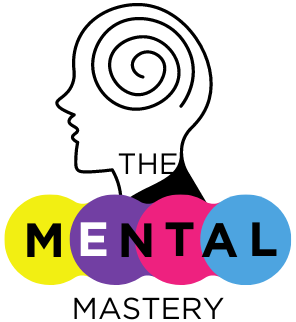How to Make Big Decisions in Challenging Circumstances (+ TEDx Talk)
Making decisions can feel challenging during the unpredictable times that life frequently throws at us. Big decisions, including deciding on a career path, relocating to a new area, or ending a relationship, can be terrifying. The stakes seem considerably bigger in difficult situations, and feelings can impair judgment. Understanding how to approach these decisions is critical for mental health and overall well-being.
Inspired by Jonathan Reimer’s TED Talk on the subject, this article examines methods for making intentional decisions at challenging times. By combining useful tools with psychological insights, you’ll feel prepared to face your decisions with clarity and confidence.

Understanding the Complexity of Decision-Making
Making decisions requires a combination of cognitive, emotional, and contextual components, especially in difficult situations. Our brain’s capacity to process information may be impaired by stress or uncertainty (Kross & Ayduk, 2017). We could rely on prejudices or strong emotions rather than reason, which can result in choices we later eventually regret.
When making significant decisions, Jonathan Reimer’s TED Talk highlights the value of self-awareness and intentionality. He emphasizes that having an understanding of both the external circumstance and our psychological reactions to it frequently leads to clarity. Understanding these layers helps us make more informed decisions.
Strategies for Making Big Decisions
1. Pause and Reflect
Taking a moment to pause is crucial in stressful situations. Research by Sweeny et al. (2016) found that individuals who practiced mindfulness during decision-making reported greater satisfaction with their choices. Pausing allows your brain to switch from reactive to reflective thinking.
Practical Tip: Dedicate a set time to think about your decision without distractions. Journaling your thoughts can help identify patterns and clarify priorities.
2. Break Down the Problem
Complex decisions often feel overwhelming because they appear as one massive, unsolvable issue. Breaking the decision into smaller, manageable parts can make it less intimidating.
For example:
- Define the problem clearly.
- List possible options.
- Evaluate the pros and cons of each choice.
Tools like decision matrices can provide a structured approach to evaluating options (Hammond et al., 1999).
3. Consider Your Core Values
Decisions are deeply tied to personal values. Reimer stresses the importance of aligning decisions with what truly matters to you. When your choices reflect your values, they are more likely to lead to lasting satisfaction.
Practical Tip: Ask yourself, “Does this choice align with my long-term goals and principles?” Write down your top five values and use them as a guide.
4. Seek Input from Trusted Sources
While the final decision lies with you, seeking perspectives from trusted friends, family, or mentors can provide valuable insights. According to a study by Bonaccio and Dalal (2006), social input improves decision quality by highlighting blind spots and alternative solutions.
Practical Tip: Choose individuals who can offer objective advice rather than those who might project their biases onto your situation.
5. Account for Both Logic and Emotion
Good decisions are rarely made with logic or emotion alone. Instead, they involve balancing rational analysis with emotional intuition. This approach, known as integrative decision-making, helps people make more balanced choices (Sinclair, 2011).
Practical Tip: Use techniques like the “10/10/10 rule” by Suzy Welch, where you evaluate how a decision will affect you in 10 minutes, 10 months, and 10 years.
6. Embrace Uncertainty
Challenging circumstances often come with uncertainty. Rather than striving for a perfect solution, focus on making the best possible choice with the information available. Research by Kahneman et al. (2021) underscores the importance of flexibility and adaptability in decision-making.
Practical Tip: Reframe uncertainty as an opportunity for growth. Remind yourself that no decision is set in stone; adjustments can always be made.
Insights from Jonathan Reimer’s TED Talk
In his TED Talk, Jonathan Reimer outlines three key principles for making decisions under pressure:
- Clarity Through Simplification: Simplify the decision by identifying its core elements.
- Embracing Imperfection: Understand that no decision is flawless, and perfectionism can hinder progress.
- Mindful Action: Act with awareness and intention, even if the outcome isn’t guaranteed.
Reimer’s insights resonate with psychological research, which highlights the importance of mindfulness, flexibility, and value alignment in decision-making.
Overcoming Decision Paralysis
When faced with a tough decision, it’s easy to feel stuck. This phenomenon, known as decision paralysis, occurs when the fear of making the wrong choice leads to inaction. To overcome this, consider the following strategies:
- Set a Deadline: Give yourself a reasonable timeframe to make the decision.
- Prioritise Action Over Perfection: Remind yourself that progress often comes from taking the first step.
- Visualise Outcomes: Imagine the best and worst-case scenarios to reduce fear of the unknown.
Conclusion
Making important choices in difficult situations can be stressful, but it’s also a chance for development and self-discovery. You may confidently navigate uncertainty by pausing, reflecting, and making decisions that are consistent with your values.
Intentionality, clarity, and mindfulness are crucial while making decisions, as demonstrated by psychological studies in Jonathan Reimer’s TED Talk. Never forget that every choice you make is a step closer to living a purposeful and happy life.
Have faith in your abilities to choose what’s best for you when you have to make your next important decision. Every choice, no matter how difficult, presents an opportunity to learn and grow.
References
Bonaccio, S., & Dalal, R. S. (2006). Advice taking and decision-making: An integrative literature review, and implications for the organizational sciences. Organizational Behavior and Human Decision Processes, 101(2), 127–151.
Hammond, J. S., Keeney, R. L., & Raiffa, H. (1999). Smart Choices: A Practical Guide to Making Better Decisions.Harvard Business Review Press.
Kahneman, D., Sibony, O., & Sunstein, C. R. (2021). Noise: A Flaw in Human Judgment. Little, Brown Spark.
Kross, E., & Ayduk, Ö. (2017). Self-distancing: Theory, research, and current directions. Advances in Experimental Social Psychology, 55, 81–136.
Sinclair, M. (2011). An integrated framework of intuition. Psychological Bulletin, 137(3), 342–361.
Sweeny, K., Andrews, S. E., Nelson, D. V., & Robbins, M. L. (2016). The importance of mindful waiting during stressful decision-making. Journal of Behavioral Medicine, 39(6), 1030–1041.







